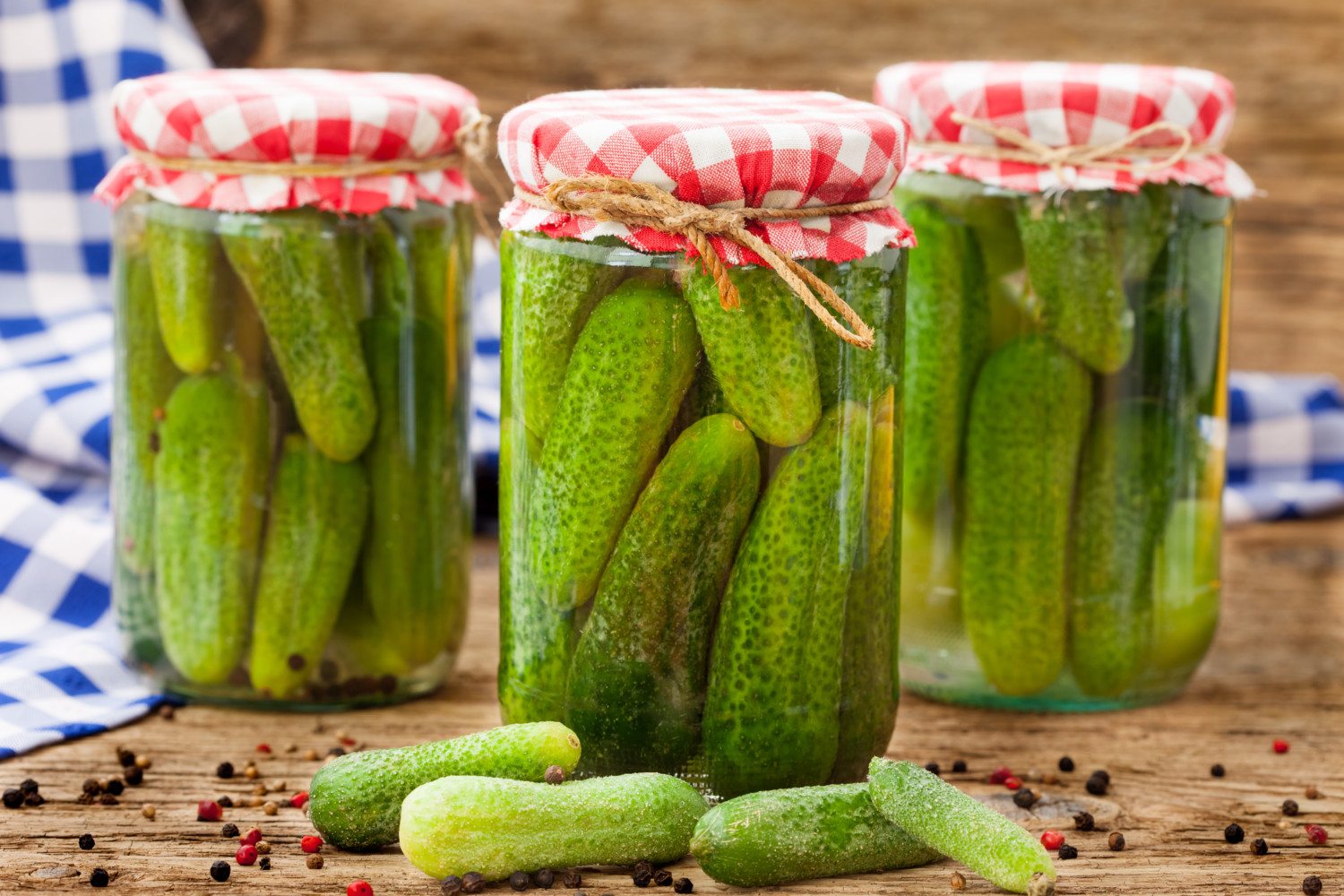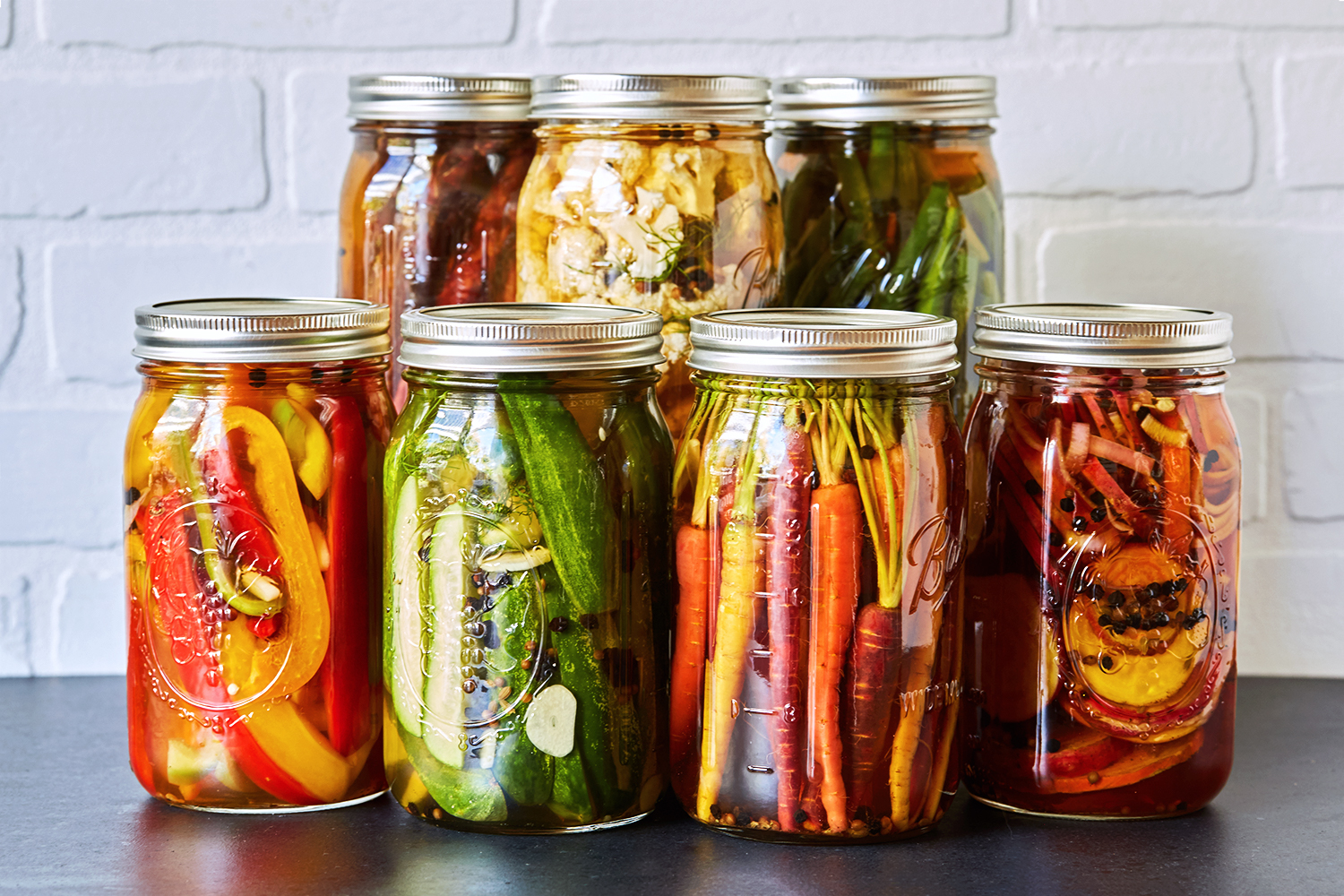Understanding Wood Cabinet Pickling: How To Pickle Wood Cabinets

Pickling wood cabinets is a unique and trendy technique that involves altering the color and texture of the wood to create a distinctive aged or distressed look. This process utilizes chemical solutions to create a reaction that changes the surface of the wood, resulting in a desirable aesthetic that complements various interior design styles.
Benefits of Pickling Wood Cabinets
Pickling wood cabinets offers several advantages that make it a popular choice for homeowners and designers alike.
- Unique Aesthetic: The process creates a distinctive, aged, and rustic appearance that adds character and charm to cabinets. It complements farmhouse, industrial, and vintage design styles.
- Enhanced Durability: The pickling process can improve the wood’s durability by sealing the pores and creating a protective layer that resists moisture and stains.
- Cost-Effective: Compared to other wood finishing techniques like staining or painting, pickling can be more cost-effective, especially for achieving a distressed or antique look.
Pickling Methods
There are several pickling methods available, each with its own set of advantages and disadvantages. Understanding the differences between these methods can help you choose the best option for your specific project.
- Water-Based Pickling: This method uses water-based solutions, making it a more environmentally friendly option. It typically involves applying a pickling solution to the wood and then using a sanding technique to create a distressed effect.
- Oil-Based Pickling: This method uses oil-based solutions that penetrate the wood deeper, creating a more durable finish. Oil-based pickling solutions can also produce a richer color and deeper texture. However, they are less environmentally friendly and require proper ventilation during application.
- Chemical Pickling: This method involves using strong chemical solutions that react with the wood’s tannins to create a dramatic color change. Chemical pickling is often used for creating a heavily distressed look, but it can be more aggressive and may require professional application.
Comparing Pickling Methods
| Method | Pros | Cons |
|---|---|---|
| Water-Based | Environmentally friendly, easy to apply, suitable for lighter distressing | Less durable than oil-based, may not achieve deep color changes |
| Oil-Based | Durable finish, deeper color penetration, creates a richer texture | Less environmentally friendly, requires proper ventilation, may be more expensive |
| Chemical | Creates dramatic color changes, achieves a heavily distressed look | Aggressive, requires professional application, may be harmful if not handled properly |
Preparing for Pickling

Before you dive into the exciting world of pickling your wood cabinets, a little preparation goes a long way in achieving a beautiful, professional finish. It’s like setting the stage for a masterpiece!
This section will guide you through the essential steps of preparing your wood cabinets for pickling, ensuring a smooth and successful process.
Cleaning
Thorough cleaning is the foundation of any successful wood finishing project. It removes dirt, dust, grease, and any existing finishes that might interfere with the pickling process.
Here’s how to clean your wood cabinets effectively:
* Dust and Wipe: Start by dusting your cabinets with a soft cloth or brush to remove loose debris.
* Degrease: Use a mild detergent or a degreaser specifically designed for wood to remove any greasy residue.
* Rinse: Thoroughly rinse the cabinets with clean water to remove all traces of detergent or degreaser.
* Dry: Let the cabinets dry completely before proceeding to the next step.
Sanding
Sanding is crucial for creating a smooth surface that allows the pickling solution to penetrate evenly. It also helps to remove any imperfections or unevenness that might affect the final finish.
Here’s a step-by-step guide to sanding your wood cabinets:
* Start with Coarse Grit: Begin with a coarse-grit sandpaper (around 80-120 grit) to remove any stubborn imperfections or old finishes.
* Progress to Finer Grit: Gradually transition to finer grit sandpaper (around 150-220 grit) to create a smooth surface.
* Sand with the Grain: Always sand in the direction of the wood grain to avoid scratches and ensure a consistent finish.
* Sand in Sections: Work in small sections, applying even pressure to ensure consistent sanding.
* Remove Dust: Thoroughly remove sanding dust using a tack cloth or a damp cloth before proceeding.
Sealing
Sealing the wood is an essential step before applying the pickling solution. It prevents the wood from absorbing too much stain, ensuring a consistent color and preventing blotchiness.
Here’s what you need to know about sealing your cabinets:
* Choose the Right Sealant: Opt for a wood sealer that is compatible with the type of wood and the pickling solution you’re using.
* Apply Evenly: Apply the sealant evenly to the entire surface of the cabinets, following the manufacturer’s instructions.
* Let it Dry: Allow the sealant to dry completely before moving on to the next step.
Essential Tools and Materials
Having the right tools and materials at hand makes the pickling process more efficient and enjoyable.
Here’s a checklist of essentials:
- Soft cloth or brush
- Mild detergent or wood degreaser
- Tack cloth
- Sandpaper (various grits)
- Sanding block
- Wood sealer
- Paintbrushes or foam rollers
- Gloves
- Eye protection
- Respirator mask
- Drop cloths
- Cleaning supplies
Choosing the Right Stain
Selecting the right wood stain is crucial for achieving the desired look for your pickled cabinets.
Here are some factors to consider:
* Type of Wood: Different wood species react differently to stains. Consider the type of wood you’re working with and choose a stain that is compatible.
* Color: Pickling solutions come in a variety of colors. Select a color that complements the style of your cabinets and your overall design scheme.
* Finish: Some pickling solutions offer a matte finish, while others offer a more glossy look. Choose the finish that best suits your preferences.
* Brand Reputation: Look for reputable brands that offer high-quality pickling solutions known for their durability and color consistency.
Always test the pickling solution on a small, inconspicuous area of the cabinet before applying it to the entire surface. This allows you to assess the color and ensure you’re happy with the results.
Pickling Techniques and Procedures

Pickling wood cabinets involves applying a chemical solution to the wood’s surface, altering its color and creating a unique, aged aesthetic. This process can be achieved through various techniques, each offering distinct outcomes and complexities. Understanding these techniques allows you to select the method that best suits your desired look and project scope.
Traditional Pickling Techniques
Traditional pickling methods often rely on natural ingredients and time-tested processes. These techniques offer a more authentic, aged appearance and are often preferred for their environmentally friendly approach.
- Whitewash Pickling: This method involves applying a diluted mixture of white paint and water to the wood surface. The paint is allowed to dry partially, then wiped away, leaving behind a subtle, whitewashed effect. The result is a light, airy finish that enhances the wood’s natural grain.
- Limewash Pickling: Limewash is a traditional whitewash made from slaked lime, water, and sometimes other ingredients like pigments or binders. Applying limewash to wood creates a soft, chalky finish that offers a rustic, aged look. The limewash penetrates the wood’s pores, creating a unique texture and allowing the wood’s grain to show through.
- Vinegar Pickling: This technique utilizes vinegar’s acidic properties to lighten the wood’s color and create a distressed, aged appearance. The vinegar solution is applied to the wood surface and allowed to sit for a period of time, then wiped away. The vinegar’s acidic nature reacts with the wood, creating a subtle color change and a weathered look.
Modern Pickling Techniques, How to pickle wood cabinets
Modern pickling techniques often incorporate chemical solutions and advanced application methods, providing greater control over the final outcome. These methods allow for precise color adjustments and a wider range of effects, catering to contemporary design preferences.
- Chemical Pickling: This method involves using commercial pickling solutions that contain chemical agents designed to lighten and soften the wood’s surface. These solutions are typically applied with a brush or cloth, and the amount of time the solution remains on the wood determines the level of color change and distressing.
- Water-Based Pickling Stains: Water-based pickling stains are a popular modern approach, offering a controlled and predictable outcome. These stains contain pigments and chemical agents that react with the wood, creating a subtle color change and a distressed look. They are easy to apply and can be customized to achieve a variety of effects.
Applying Pickling Solution
The application method plays a crucial role in achieving the desired pickled look. Consistent and even coverage is essential for a uniform finish, while varying application techniques can create unique patterns and effects.
- Brush Application: Applying pickling solution with a brush provides the most control over coverage and allows for precise application. A natural bristle brush is ideal for traditional pickling methods, while synthetic brushes are better suited for modern chemical solutions.
- Cloth Application: Using a cloth to apply pickling solution offers a more relaxed and less precise application, creating a more organic and less uniform finish. This method is particularly well-suited for achieving a distressed, weathered look.
- Spray Application: Spraying the pickling solution provides the fastest and most even coverage. This method is particularly effective for large surfaces and for achieving a consistent, subtle effect. However, it’s important to use a fine mist setting to avoid over-saturation and ensure even application.
Achieving a Distressed or Weathered Look
Creating a distressed or weathered look on pickled wood cabinets requires a combination of techniques and a touch of artistry. The goal is to simulate the effects of time and wear, adding character and depth to the finished piece.
- Sanding: Sanding the pickled wood surface with fine-grit sandpaper can create a distressed look by exposing the wood’s natural grain and creating subtle variations in color and texture. This technique is particularly effective when used in conjunction with other distressing methods.
- Wiping: Wiping the pickled wood surface with a damp cloth can create a subtle, uneven finish that simulates the effects of weathering. The amount of water used and the pressure applied can be adjusted to create varying degrees of distressing.
- Chipping: Chipping the pickled wood surface with a hammer or other tools can create a more dramatic distressed look. This technique is best used sparingly, as it can easily be overdone.
“Remember, the key to achieving a successful distressed or weathered look is to create a sense of authenticity and to avoid making the finish look too contrived.”
How to pickle wood cabinets – The art of pickling wood cabinets is a delicate dance between preservation and transformation. Each step, from the careful preparation to the final application of the pickling solution, is an act of alchemy, bringing out the natural beauty of the wood.
Adding a touch of elegance with wood cabinet trim moulding further enhances the overall aesthetic. Just as the pickling process reveals the unique grain patterns of the wood, so too does the trim accentuate the contours and lines of the cabinets, creating a harmonious symphony of textures and forms.
Just as the process of pickling wood cabinets involves stripping away layers to reveal the natural beauty beneath, so too can our lives benefit from shedding unnecessary burdens. Imagine, for instance, the delicate elegance of a small pink bedroom chair , a reminder that true beauty often lies in simplicity.
In the same way, pickling wood cabinets allows us to appreciate the inherent character and strength of the material, a testament to the resilience and beauty found in all things, even in the seemingly mundane.
